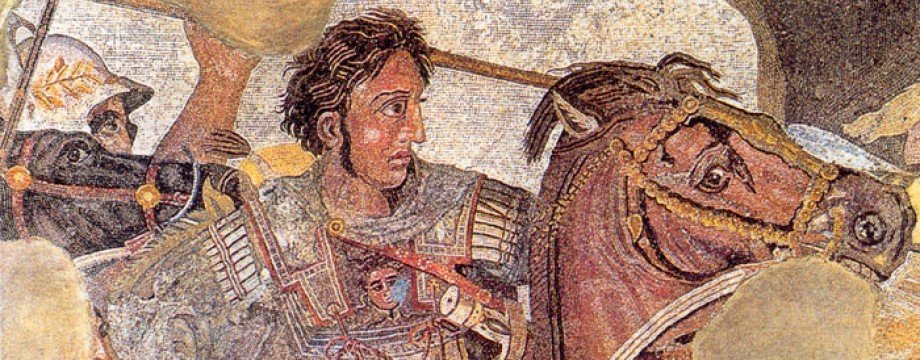The Nature of Curtius
Book Three Chapter 2 & 3
For the other posts in this series, click here
Chapter Two
A field outside Babylon
At the start of The Lord of the Rings there is a scene when a fox comes across the hobbits as they rest in the woodland of the Shire.
“‘Hobbits!’ he thought. ‘Well, what next? I have heard of strange doings in this land, but I have seldom heard of a hobbit sleeping out of doors under a tree. Three of them! There’s something mighty queer behind this.’ He was quite right, but he never found out any more about it.
Let us imagine a fox taking a walk down a country road just outside Babylon in 333 B.C. It is a mild November morning in Mesopotamia*, perfect hunting weather. Suddenly, the fox halts. He has heard a distant thud thud thud. He doesn’t round and run away, though. For one thing, the noise is mesmerising in its consistency; for another, he knows what it portends. The fox walks forward before stopping at the top of a slope.
Thud thud thud.
The noise grows louder. And then, after what seems an age, a column of men led by a cavalry officer appears from round a corner at the far end of the road. They don’t approach the fox, though; instead, they take another turn to his left.
For reasons best known to himself, the fox decides to follow the column. He wriggles his way underneath the hedgerow at the side of the road (It’s true, I may be making Mesopotamia sound like England here) and trots along the top of the hill for what seems an age.
As he walks, the breeze picks up and the fox hears shouting, trumpets blowing, feet marching and picks up the scent of many strange bodies.
Finally, the animal comes to the opposite end of the hill from where he started. And after emerging from underneath another hedgerow, he sees in the near distance a plain. And that plain is brim full of men gleaming with ‘purple and gold’.
‘The Great King’s army,’ he said to himself. ‘I have seen it before, but not this size. All his men must be here. And there is the Great King himself, standing on his chariot, reviewing his soldiers before they set off to battle. He is holding himself very proudly. But who is he about to fight? It must be a mighty foe, indeed.’ It was, but the fox had breakfast to catch, so never found out who this powerful enemy was.
As for the army - Curtius reports that Darius reviewed a quarter of a million infantry and sixty-two thousand cavalry on that plain. Although they came from many parts of his empire, not all regions were represented. The eastern provinces, Bactria and Sogdia, for example, had not had enough time to send men there.
I am assuming that the field used by Darius in the same way that the Romans used the Campus Martius - for pasturage and military exercises. It would be very rum the Great King used someone’s estate. Especially since he damaged it by digging a ditch to delineate the border of the area he was using for the review. Farmer Maggot would not have stood for that.
During the review, Darius asked his Athenian commander, Charidemus, if he thought that this army was enough to defeat Alexander’s. Charidemus replied bluntly that it was not. Insulted, Darius had him executed only to regret his decision immediately afterwards.
* I am basing this statement on the weather and climate for Baghdad as described here. I know that over time our climate changes; hopefully, in the case of Mesopotamia, it has not done so by too much in the last 2,300 years.
Chapter Three
Sacred Animals
A number of animals ‘accompanied’ Darius as he marched north to confront Alexander. There were the white horses that drew the ‘chariot consecrated to Jupiter’ (i.e Ahura Mazda) and behind them ‘a horse of extraordinary size’, which the Persians called ‘the sun’s horse’. They were driven by men wearing white robes and wielding golden whips. I’m sure the sting just felt the same, though.
Curtius describes Darius’ chariot as being mounted with images of two gods - Ninus and Belus. Between them ‘was a consecrated eagle made of gold and represented with wings outstretched’. I have to admit I was a little surprised when I read this as I am more used to thinking of eagles as Roman and Greek symbols.
Wikipedia says that some Greek writers wrote that the Achaemenes, the founder of the Archaemenid empire (c. 700 B.C.), was raised by an eagle. Perhaps Darius was referencing this? Or maybe Curtius added the detail in order to build up the architecture of his his narrative.
The eagle was not the only bird-of-prey on display. Darius wore a cloak that ‘bore a gilded motif of hawks attacking each other’. It sounds terribly impressive. But there’s no chance Curtius will leave us with that image of the Great King. Immediately afterwards he says that Darius wore his belt ‘in the style of a woman’. Can who ever is last out please clean up the sarcasm behind them.
